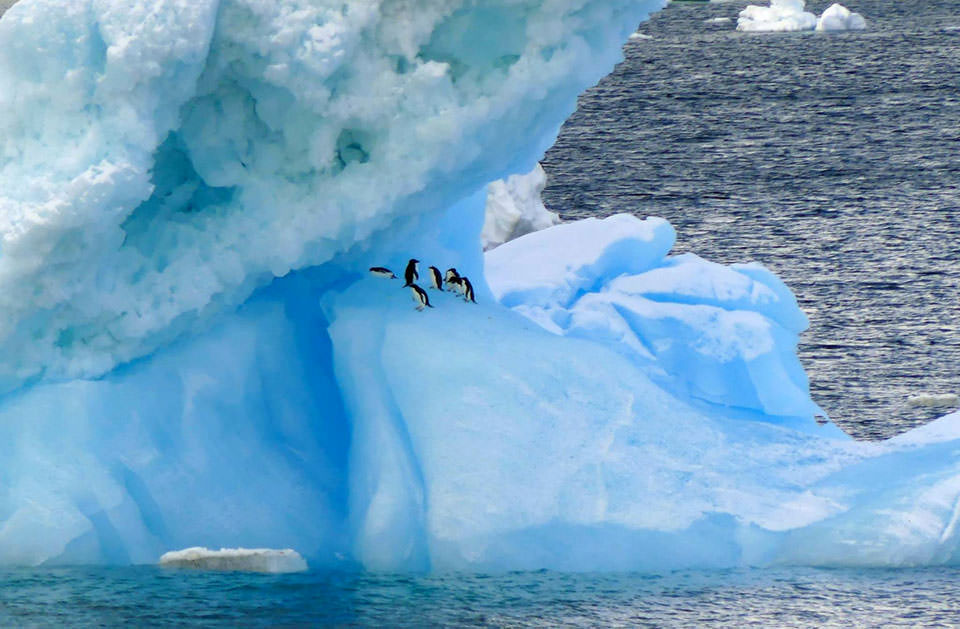What color is an iceberg?
The colorful hues of icebergs result from the interplay of light with dense ice, ice crystals, and algal growth.

An iceberg (and a few penguins) floating off the coast of Antarctica. Photo courtesy of Kathy Reitz.
Most people would say that icebergs are white—and most of them are. But did you know that icebergs can also appear in spectacular shades of blue and green? An iceberg looks white because compressed snow on its surface contains large numbers of tiny air bubbles and crystal edges that equally reflect all wavelengths of visible light.
As more and more heavy snow accumulates atop an iceberg, the air bubbles get compressed, forcing the smaller ice crystals to grow together and merge into larger grains. When the iceberg is underwater, the air bubbles are squeezed out and washed away. Then, when light encounters the dense, compressed ice, much of the light penetrates it. The ice absorbs longer wavelengths of colors, such as red and yellow. Colors of shorter wavelengths, like green and blue, reflect the light. This "leftover" blue-green light is what gives some icebergs their remarkable colors.
Additionally, algae often grow on the underwater sides of icebergs, producing beautiful green stripes in the ice. These are readily seen when an iceberg rolls over and sections that were previously underwater are exposed.
The U.S. National Ice Center, operated by NOAA, the U.S. Navy, and the U.S. Coast Guard, monitors ice and snow worldwide.